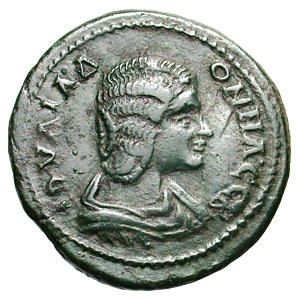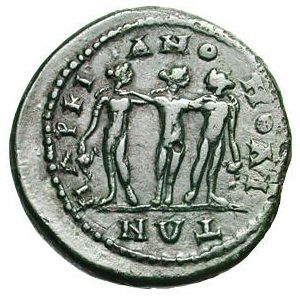Marcianopolis Æ24 - Julia Domna (MAPKIANOΠOΛITΩN; Marcianopolis)
Introduction
The Æ24 coin featuring Julia Domna from Marcianopolis is a captivating piece of ancient numismatic history. This bronze coin, minted between 193 and 217 AD, showcases the elegance and artistry of the era.
Historical Background
Marcianopolis, a city in Moesia Inferior, was known for its prolific coin production during the Roman Empire. The coins minted here often depicted prominent figures of the time, such as Julia Domna, the wife of Emperor Septimius Severus.
Coin Images
 Obverse
Obverse
 Reverse
Reverse
Design Features
The obverse of this coin displays a bust of Julia Domna, elegantly draped and facing right. Her regal depiction symbolizes power and grace. On the reverse, we see the three Graces standing together, embodying beauty, charm, and creativity. The intricate details of the design reflect the artistic prowess of the minters.
Technical Specifications
This bronze coin has a weight of 9.00g and a diameter of 24.00mm, making it a substantial piece in terms of size. The composition of bronze adds a rustic appeal to the overall aesthetic of the coin, further enhancing its historical value.
Collectible Value
Julia Domna coins from Marcianopolis hold significant value among collectors and numismatists. Due to their historical importance and limited availability, these coins are sought after for their rarity and beauty. The market value of these coins can vary based on factors such as condition and demand, making them a valuable addition to any collection.
Conclusion
In conclusion, the Julia Domna bronze coin from Marcianopolis is a remarkable artifact that encapsulates the artistry and history of ancient Roman coinage. Its intricate design, historical significance, and collectible value make it a prized possession for both collectors and history enthusiasts alike. Owning a piece of this ancient coinage allows one to connect with the past and appreciate the craftsmanship of a bygone era.

